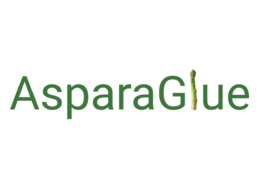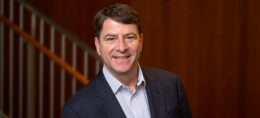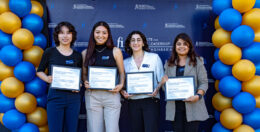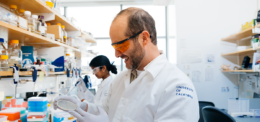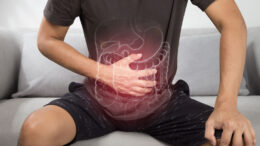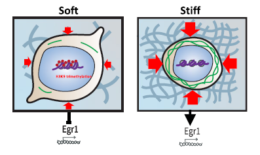Biomaterials and Nanotechnology

Work in biomaterials involves the careful analysis and manipulation of living tissue and artificial materials for the repair, replacement and improvement of biological systems. Nanotechnology creates tools that work at the nanoscale, only billionths of a meter. Exciting efforts are underway to combine these two areas to assemble materials and devices from nanoscale building blocks, including biomolecules.
Applications include drug delivery methods, bio-inspired adhesives and repair materials, tiny engineered sensors, medically-useful nanoparticles, and even energy generation systems.
Research in biomaterials and nanotechnology has real-world impact in areas like:
The Environment, drug delivery, materials, manufacturing, sensors and tissue repair.
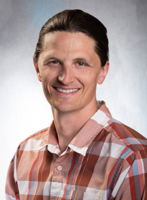
Iain Clark
For more information, see: http://clarklab.berkeley.edu/
The Clark Lab develops microfluidic and molecular methods for the high throughput analysis of single cells. We use these techniques to study HIV latency in CD4 T cells and profile cellular interactions during central nervous system inflammation.
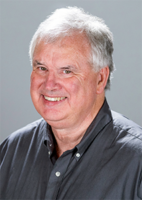
Steve Conolly
For more information, see: https://bisl.berkeley.edu/
The Conolly Lab has built the world’s highest spatial resolution MPI scanner and the only projection MPI scanner in the world. In addition, the lab has built the only 3D Projection-Reconstruction MPI scanner currently in existence.
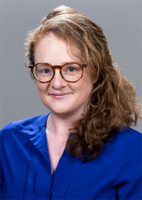
Derfogail Delcassian
The development of immunoengineering technologies to direct immune cell function. We build artificial lymph nodes, mRNA vaccines and 3D printed interfaces to study and control immune cell behaviour. These technologies have applications in cancer therapy, inducing transplant tolerance, spaceflight and auto-immune diseases.
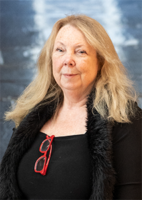
Teresa Head-Gordon
For more information, see: https://thglab.berkeley.edu/
The simultaneous revolutions in energy, molecular biology, nanotechnology and advanced scientific computing, is giving rise to new interdisciplinary research opportunities in computational science. The Head-Gordon lab embraces this large scope of science drivers through development of computational models and methodologies applied to molecular liquids, macromolecular assemblies, protein biophysics, and homogeneous, heterogeneous catalysis and biocatalysis. The development and application of complex chemistry models, accelerated sampling methods, coarse graining/multiscale techniques, and machine learning developed in her lab are widely disseminated through many community software codes that scale on high performance computing platforms.
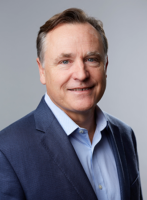
Kevin Healy
For more information, see: https://biomaterials.berkeley.edu/
Research in the Healy Lab emphasizes the relationship between materials and the cells or tissues they contact. The research program focuses on the design and synthesis of bioinspired materials that actively direct the fate of mammalian cells, and facilitate regeneration of damaged tissues and organs. Major discoveries from his laboratory have centered on the control of cell fate and tissue formation in contract with materials that are tunable in both their biological content and mechanical properties. Professor Healy also has extensive experience with human stem cell technologies, microphysiological systems, drug delivery systems, and novel bioconjugate therapeutics.
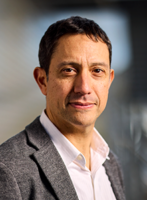
Christopher Hernandez
For more information, see: https://www.hernandezresearch.com/
Dr. Hernandez’s research in biomechanics examines the musculoskeletal system, microscopic organisms and interactions between microbes and materials. Current projects include understanding how the microbiome influences bone and infection of total joint replacements, how bacteria are influenced by mechanical stress and strain, and engineered living materials.
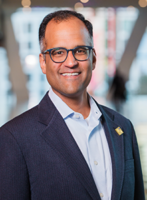
Sanjay Kumar
For more information, see: https://kumarlab.berkeley.edu/
Our lab seeks to understand and engineer mechanical and other biophysical communication between cells and materials. In addition to investigating fundamental aspects of this problem with a variety of micro/nanoscale technologies, we are especially interested in discovering how this signaling regulates tumor and stem cell biology in the central nervous system. Recent directions have included: (1) Engineering new tissue-mimetic culture platforms for biophysical studies, molecular analysis, and screening; (2) Exploring mechanobiological signaling systems as targets for limiting the invasion of brain tumors and enhancing stem cell neurogenesis; and (3) Creating new biomaterials inspired by cellular structural networks.
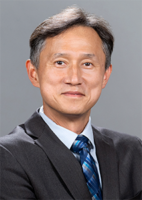
Seung-Wuk Lee
For more information, see: https://leelab.berkeley.edu/
We are interested in bio-inspired nanomaterials and nanotechnology. We are developing new ways to fabricate high performance materials and devices through self-assembly processes by exploiting biological organisms such as viruses and cells. We are also designing synthetic viruses which can be exploited as regenerative tissue engineering materials and drug delivery vehicles.
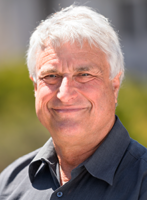
Dorian Liepmann
For more information, see: https://liepmannlab.squarespace.com/
BioMEMS, microfluid dynamics, experimental biofluid dynamics, hemodynamics associated with valvular heart disease and other cardiac and arterial flows.
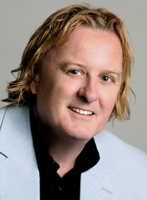
Gerard Marriott
For more information, see: https://www.marriottlab.com/
The Marriott lab is recognized for its innovative research programs at the interface of bioengineering, chemistry, and biophysics. Our technology-driven research programs are advanced through long-standing interests in the design, synthesis, and engineering of biosensors and biomaterials, and their applications to biosensing, microscope imaging, drug delivery, and wearable diagnostics.
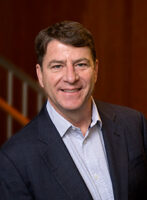
Phillip Messersmith
For more information, see: https://bioinspiredmaterials.berkeley.edu/
My laboratory is interested in understanding structure-property relationships in biological materials and in using this information to design biologically inspired materials for use in healthcare. Fundamental studies include single molecule and bulk biophysical studies of biointerfacial and bulk mechanochemical phenomena in biological materials, whereas our applied studies the design and synthesis of novel biomaterials for tissue repair and regeneration.
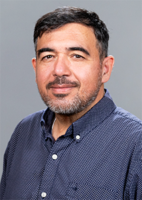
Mohammad Reza Kaazempur Mofrad
For more information, see: https://biomechanics.berkeley.edu/
Molecular and Multiscale Biomechanics; Bioinformatics and Computational Biology; Statistical Machine Learning; Computational Precision Health; Microbiome; Personalized Medicine
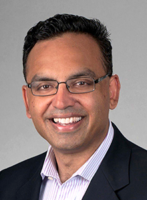
Niren Murthy
For more information, see: https://murthylab.berkeley.edu/
Our laboratory is focused on developing new materials for drug delivery and molecular imaging.
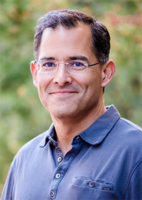
David Schaffer
For more information, see: http://www.cchem.berkeley.edu/schaffer/
Our research program melds basic biology and applied engineering principles to investigate preclinical and clinical gene and stem cell therapies, i.e. gene replacement and cell replacement approaches to treat human disease.
News About: Biomaterials & Nanotechnology
Messersmith’s AsparaGlue named East Bay Innovation Awardee
Berkeley startup AsparaGlue, founded on science by Professor Phil Messersmith and postdoc Subhajit Pal, won an East Bay Innovation Award for their bioinspired surgical superglue.
Messersmith named AAAS Fellow
Bioengineering Chair Phillip Messersmith has been named to the 2024 class of fellows elected to the American Association for the Advancement of Science (AAAS), one of the world’s largest general scientific societies and publisher of the Science family of journals.
Healy Lab startup receives LSEC Venture Grant
MuscleMatrix and their hydrogel scaffold for muscle loss injuries is part of LSEC’s 2nd cohort of Venture Grant startups.
Acid-degradable lipid nanoparticles enhance the delivery of mRNA
Research by Niren Murthy’s lab presents a new acid-degradable linker that rapidly hydrolyzes in endosomes but is stable in the blood, which could significantly increase the efficiency of delivering mRNA-based therapies to cells.
New recyclable adhesives can be easily adapted for medical, consumer and industrial applications
Messersmith Lab has created a family of polymers from a stabilized alpha-lipoic acid which could lead to versatile, high-performance and environmentally friendly recyclable adhesives.
BioE team wins 2024 Fung Institute Capstone Innovation Award
The Master of Engineering capstone design team advised by bioengineering faculty Kevin Healy and Syed Hossainy has won the 2024 Capstone Innovation Award. The team of Angana Dasgupta, Isabella Lopez, Natalie Saadeh, and Boyan Yin was selected for their project, “Experimental assessment of multiple cell lines’ function and morphology on piezo-responsive films under small amplitude…
Berkeley’s ecosystem of innovation, entrepreneurship combats climate change
Professors John Dueber and David Schaffer are featured in this article highlighting campus research and entrepreneurship in sustainability.
Researchers make advances toward more effective IBD therapies
Researchers in Professor Phillip Messersmith’s lab have demonstrated that treatment with DPCA, an enzyme inhibitor molecule shown to trigger regeneration in mammals, can protect against and repair colon damage in a mouse model of colitis. This work suggests that short-term use of this small molecule drug could someday provide a restorative therapy for patients with IBD — and a path to remission.
Messersmith named MRS Fellow
Professor Phillip Messersmith has been named to the 2023 class of Fellows of the Materials Research Society. The Fellows program recognizes outstanding contributions to the field, including research, leadership, and service that have advanced the mission of the materials community world-wide. It is intended to be a lifetime recognition of distinction in the field.
Kumar and Schaffer discover how biomaterials regulate stem cell neurogenesis in 3D
Engineered biomaterials are increasingly used to expand and differentiate stem cells for technological and therapeutic applications. A major open question in the field is how the mechanical properties of material scaffolds regulate stem cell differentiation, especially in complex 3D geometries like those found in tissue. In a collaborative study published in Science Advances, the labs of Sanjay Kumar and David Schaffer have discovered a 3D-specific molecular mechanism through which mechanical inputs act through the transcription factor Egr1 to determine how efficiently neural stem cells turn into neurons.


